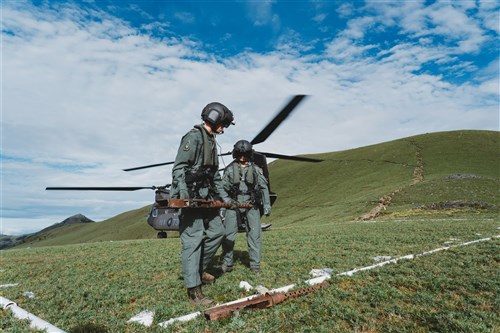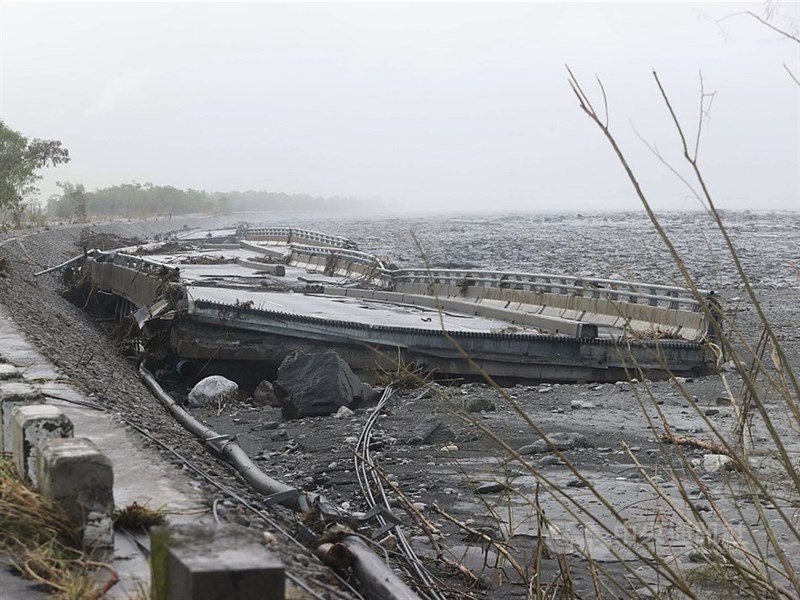FEATURE/Ukraine experience shows huge challenge Taiwan faces on drone attacks
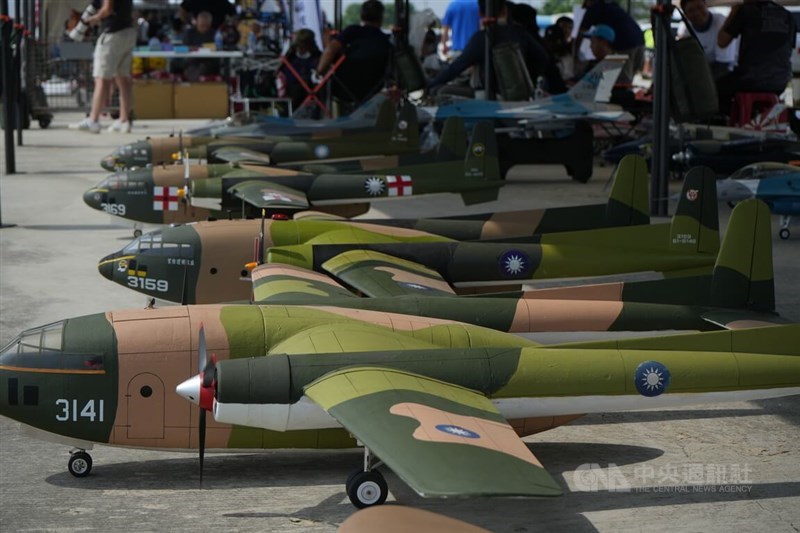
By Sean Lin, CNA staff reporter
John Frankiv had endured a sleepless night when contacted by CNA on July 10 and had to postpone the interview by eight hours. The Russian military had attacked Ukraine with 397 strike drones and 18 missiles in the early hours of the day, and the loud explosions in Kyiv had kept him awake, Frankiv said.
"Every morning we have maybe five to 10 killed and maybe 50 to 60 wounded," said Frankiv, chief technology officer of Kara Dag, an American-Ukrainian manufacturer of wearable drone detectors.
Daily reports issued by Ukraine's Air Force suggest that drones are causing more serious casualties than missiles, a sobering prospect for Taiwan, given that China is the world's biggest producer of drones and has the capacity to relentlessly pound Taiwan with them.
Taiwan's government is hoping not to be caught short, pledging to procure 47,000 drones by 2028 out of an annual production target of 180,000 drones by then, according to the Taiwanese government-funded Research Institute for Democracy, Society and Emerging Technology in Taipei.
But anti-drone defense systems are also critical, as Ukraine has shown. In the July 9-10 attack, Ukraine said none of the 18 missiles hit paydirt while 33 of the 397 drones got through, killing two people and leaving another 38 injured.
Of the 364 drones taken down, 164 were shot down and 200 were suppressed with electronic warfare.
In another attack on July 14 involving 136 drones, in which at least six people were killed and 30 injured, according to the Kyiv Independent, the interception rate dropped to 79.4 percent as Russia expanded the attacks to other regions.
Frankiv said most buildings in recent attacks were hit by Iranian-made Shahed-136 kamikaze drones, each carrying up to 50 kilograms of explosives. Russia now launches hundreds of them nightly.
"Maybe once a week, one of the buildings collapses, then we have more casualties," Frankiv said, noting that some Ukrainians live in damaged buildings.
Civilians under threat?
He warned that similar destruction could unfold in Taiwan should China invade, especially given Taiwan's much more confined area, which would likely result in even higher casualties.
With the Taiwan Strait averaging only 180 kilometers in width -- and just 130 kilometers at its narrowest point -- China could "easily launch thousands of drones [across the Strait] every night," Frankiv said.
He believes drone attacks on civilian housing in Taiwan are not only plausible but "logical" from China's perspective, given their psychological and strategic effects.
First, it can turn civilians against their government and weaken support for the military, he said, citing patterns seen in the Russia-Ukraine war.
"It's their tactic to terrorize people, because they know we are a democratic country, and their logic is that we'll go out and protest against the government," Frankiv said.
This tactic, however, has had limited success in Ukraine.
"It only makes us angrier -- and sleepier," he said with a wry smile.
Second, it prompts displacement. Many leave for safer cities or emigrate altogether, Frankiv said.
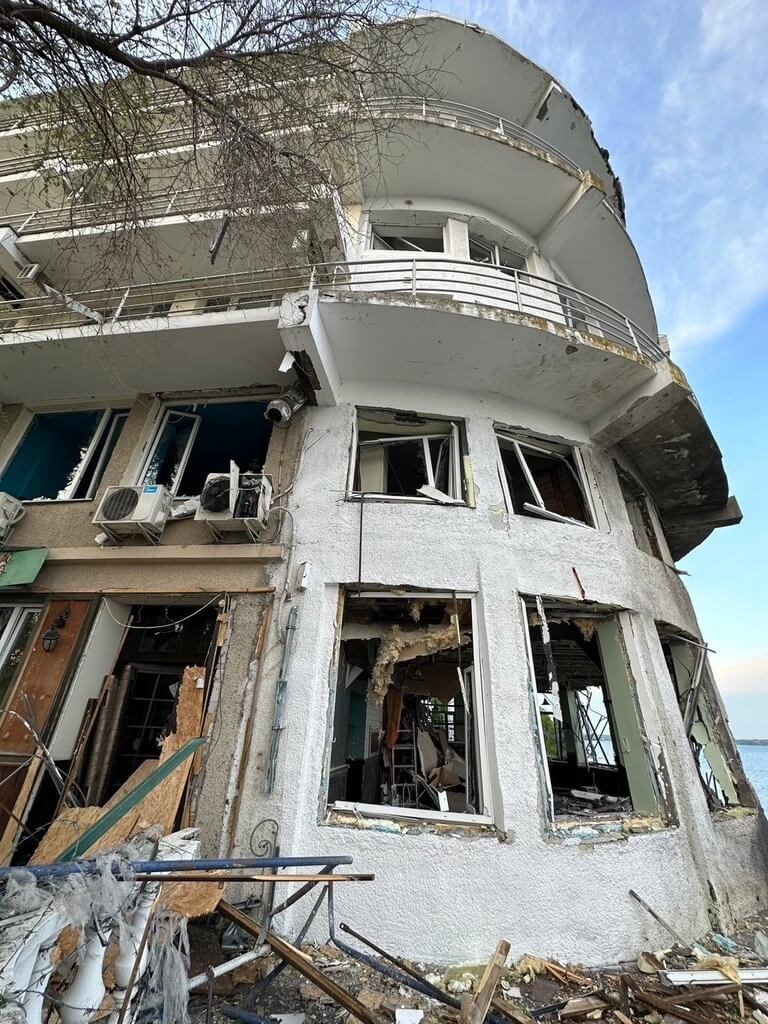
Another effect, he said, is reduced productivity.
"For civilians, it's terrifying to hear drones exploding. The next day, they can't work because they didn't sleep. They need to sleep."
Taiwan is trying to counter the threat of air raids by strengthening its civil defense system protocols, including through air raid drills conducted this week that include in some locations getting people to air raid shelters.
Urgent need for drone defense
For that to be effective, however, Taiwan also needs to bolster its drone defenses, which currently face serious shortcomings, said Shu Hsiao-huang (舒孝煌), an associate research fellow at Taiwan's state-run Institute for National Defense and Security Research.
Taiwan lacks a cost-effective way to shoot down Shahed-type drones, including China's ASN-301 loitering munitions. Using conventional air defense missiles is too expensive relative to the threat, he said.
In addition, "we [Taiwan] have not built any defense capabilities against small drones," which are capable of bypassing existing radar systems.
As a cheaper alternative, Shu recommended delaying the retirement of the armed forces' Oerlikon 35mm twin cannons -- currently set to be replaced by costlier national advanced surface-to-air missile systems by 2029.
He argued the cannons could be effective in defending military airports from drone attacks on fuel trucks and aircraft.
At present, one of the systems Ukraine relies on are more modern Oerlikon Skynex defense systems featuring air defense guns.
Tony Hu (胡振東), a former Pentagon official, also warned about the threat of small drones, referencing Ukraine's June 1 attack in which drones smuggled into Russia struck around 20 aircraft, including strategic bombers, destroying about half of them.
He cautioned that Chinese operatives already embedded in Taiwan could target military aircraft by launching a swarm of FPV (first-person-view) drones from the rooftops of apartment buildings near air bases.
"A US$200 drone could destroy a US$30 million F-16 or E-2 [airborne early warning aircraft]," said Hu, who served as the first senior country director for Taiwan at the Pentagon.
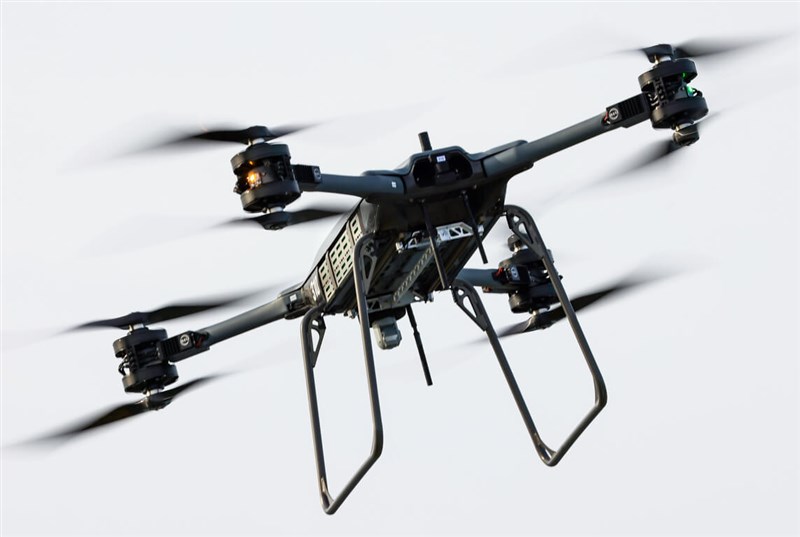
In addition, Hu warned that shooting down the drones with cannons or missiles could cause collateral damage to civilian housing near air bases.
In light of this, Taiwan should consider high-power microwaves, which can handle drone swarms as they cover areas.
"It's just an electromagnetic wave," Hu said. "So when the drones come into a certain range -- like one or two kilometers...they will lose the ability to continue flying because the electrical system will get fried."
Grassroots resilience
Frankiv, meanwhile, suggested a more grassroots approach to drone defense -- training civilians to hit Shahed drones with FPV drones.
This can be supported by technologies such as acoustic detection systems, night vision goggles, and Kara Dag's drone detectors, which can intercept video feeds from Shahed drones, he said.
Frankiv recommended that Taiwan's government begin mass training programs, starting with school-age children using FPV simulators -- similar to video games -- and progressing to exercises involving shooting down toy drones with FPV drones, as is done in Ukraine.
"I wish we had done that five years ago," he said.
"They [China] will be thinking, 'We're going to launch a blitzkrieg and take Taiwan,' but if their intelligence says it won't be that easy -- that Taiwan might hold out for a year or three -- then [China] won't attack," he said.
Enditem/ls
![Amid obstacles, Taiwan businessman still seeking WWII tragedy closure]() Amid obstacles, Taiwan businessman still seeking WWII tragedy closureWorld War II may have ended 80 years ago, but for businessman Hsu Shun-lung (許順隆), it continues to echo in Taiwan through a tragedy that has yet to be brought to a final resolution.12/27/2025 09:48 AM
Amid obstacles, Taiwan businessman still seeking WWII tragedy closureWorld War II may have ended 80 years ago, but for businessman Hsu Shun-lung (許順隆), it continues to echo in Taiwan through a tragedy that has yet to be brought to a final resolution.12/27/2025 09:48 AM![Hualien flood leaves Taiwan grappling with disaster response gaps]() Hualien flood leaves Taiwan grappling with disaster response gapsOn Sept. 23, a historic downpour caused the Matai'an Barrier Lake in Hualien to burst its banks, sending 60 million tons of water and debris through Guangfu Township and killing at least 19 people.10/16/2025 05:02 PM
Hualien flood leaves Taiwan grappling with disaster response gapsOn Sept. 23, a historic downpour caused the Matai'an Barrier Lake in Hualien to burst its banks, sending 60 million tons of water and debris through Guangfu Township and killing at least 19 people.10/16/2025 05:02 PM![Fala Formosa! Taiwanese expats to Brazil carve 7 decades of immigrant stories]() Fala Formosa! Taiwanese expats to Brazil carve 7 decades of immigrant storiesSão Paulo is not typically thought of as a hotspot for Taiwanese restaurants and Boba tea shops, much less places that attract long lines of patrons.10/03/2025 04:08 PM
Fala Formosa! Taiwanese expats to Brazil carve 7 decades of immigrant storiesSão Paulo is not typically thought of as a hotspot for Taiwanese restaurants and Boba tea shops, much less places that attract long lines of patrons.10/03/2025 04:08 PM
- Society
2 hospitalized after man self-immolates at New Taipei gas station
01/09/2026 09:40 PM - Sports
Lin An-ko excited to face Taiwanese stars as Saitama Seibu Lions player
01/09/2026 09:31 PM - Business
Taiwan's exports, imports, trade surplus smash records in 2025
01/09/2026 09:23 PM - Politics
Taiwan-Israel cooperation on technology 'inevitable': Official
01/09/2026 08:36 PM - Society
Holger Chen indicted for 'decapitating' president remarks on YouTube
01/09/2026 07:33 PM
